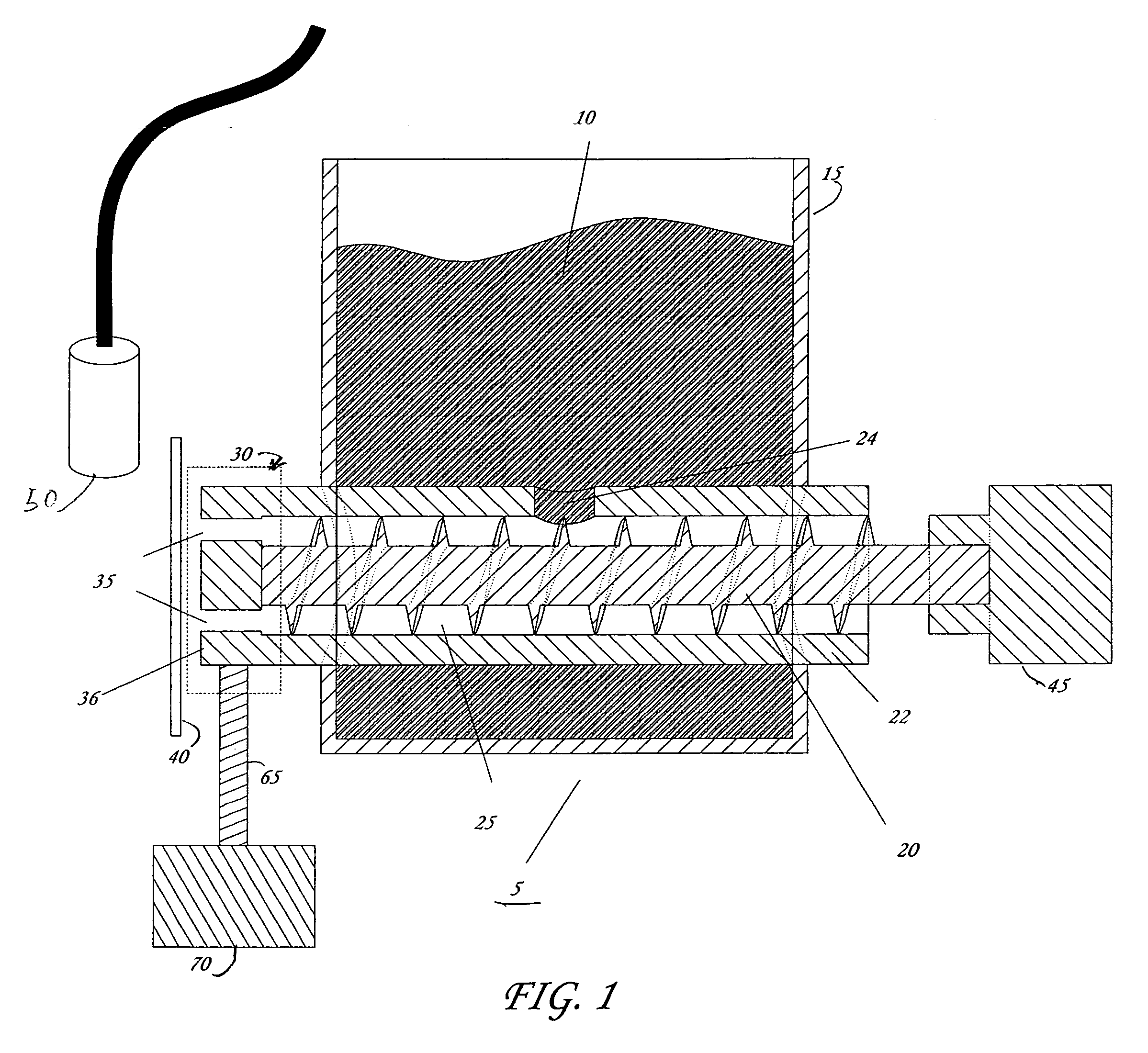Controllably feeding organic material in making OLEDs
a technology of organic materials and oleds, which is applied in the direction of vacuum evaporation coatings, chemical vapor deposition coatings, coatings, etc., can solve the problems of significant degradation, changes in the structure of molecules and associated changes in material properties, and degradation of organic materials used in the manufacture of oled devices
- Summary
- Abstract
- Description
- Claims
- Application Information
AI Technical Summary
Benefits of technology
Problems solved by technology
Method used
Image
Examples
Embodiment Construction
[0023] Turning now to FIG. 1, an apparatus 5 for metering organic material 10 into a heated surface 40 is shown. The apparatus 5 includes a container 15 which contains an organic material 10 having at least one component. A rotatable auger 20 is disposed in an auger enclosure 22 which in turn is disposed in a material receiving relationship with the container 15. The auger enclosure 22 has openings 24 for receiving powdered material from the container 15. The rotatable auger 20 moves material along a feed path 25 to a feeding location 30. Rotation of the rotatable auger 20 by a motor 45 causes the organic material to be subject to pressure at a feeding location 30; such pressure forces the organic material 10 through one or more openings 35 formed in a member 36. The member 36 can be a part of the auger enclosure 22. The pressure on the powdered material 10 at the feeding location 30 forces the powdered material 10 into contact with the heated surface 40 where the material is flash ...
PUM
| Property | Measurement | Unit |
|---|---|---|
| Diameter | aaaaa | aaaaa |
| Temperature | aaaaa | aaaaa |
| Size | aaaaa | aaaaa |
Abstract
Description
Claims
Application Information
 Login to View More
Login to View More - R&D
- Intellectual Property
- Life Sciences
- Materials
- Tech Scout
- Unparalleled Data Quality
- Higher Quality Content
- 60% Fewer Hallucinations
Browse by: Latest US Patents, China's latest patents, Technical Efficacy Thesaurus, Application Domain, Technology Topic, Popular Technical Reports.
© 2025 PatSnap. All rights reserved.Legal|Privacy policy|Modern Slavery Act Transparency Statement|Sitemap|About US| Contact US: help@patsnap.com



